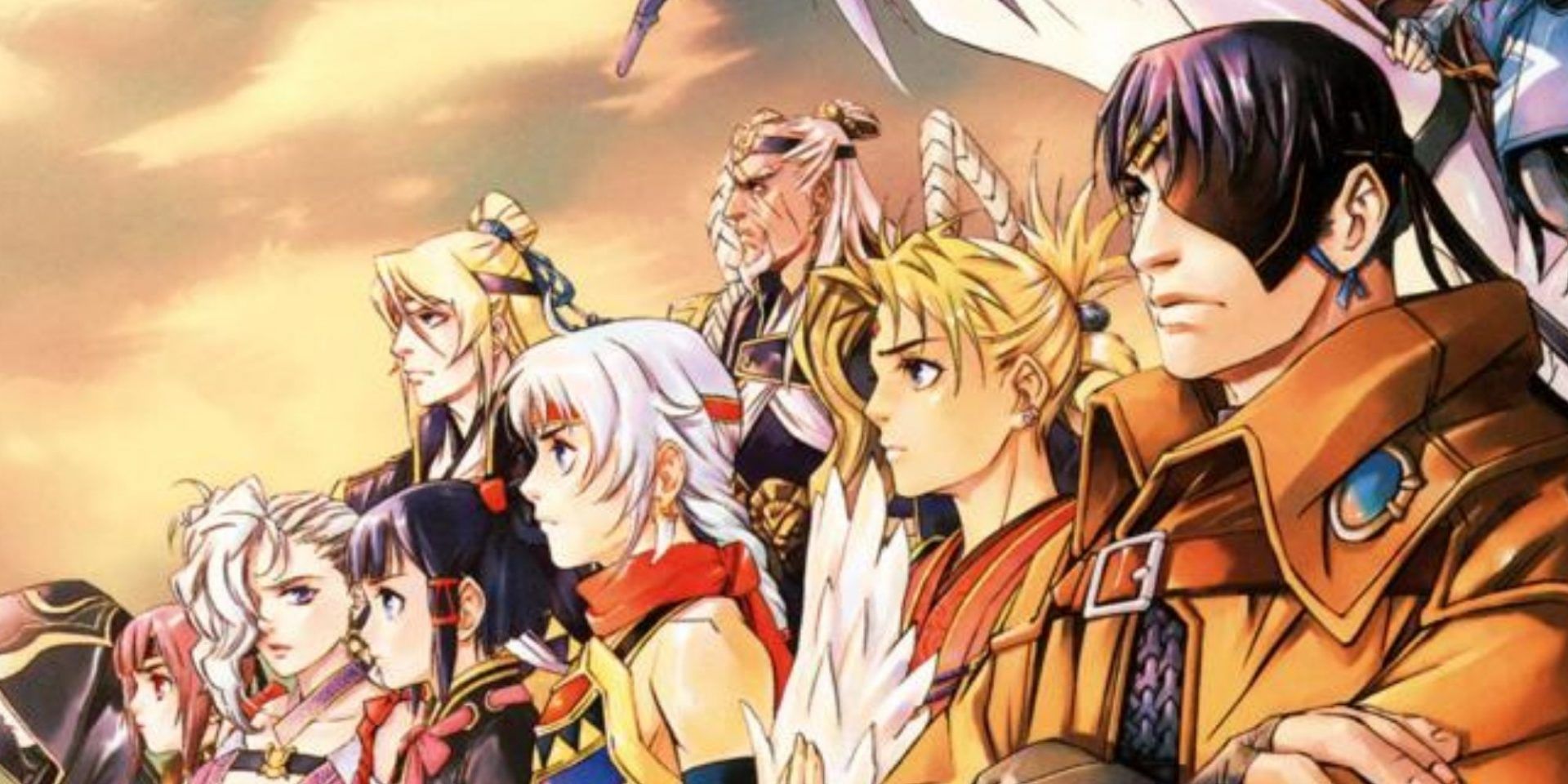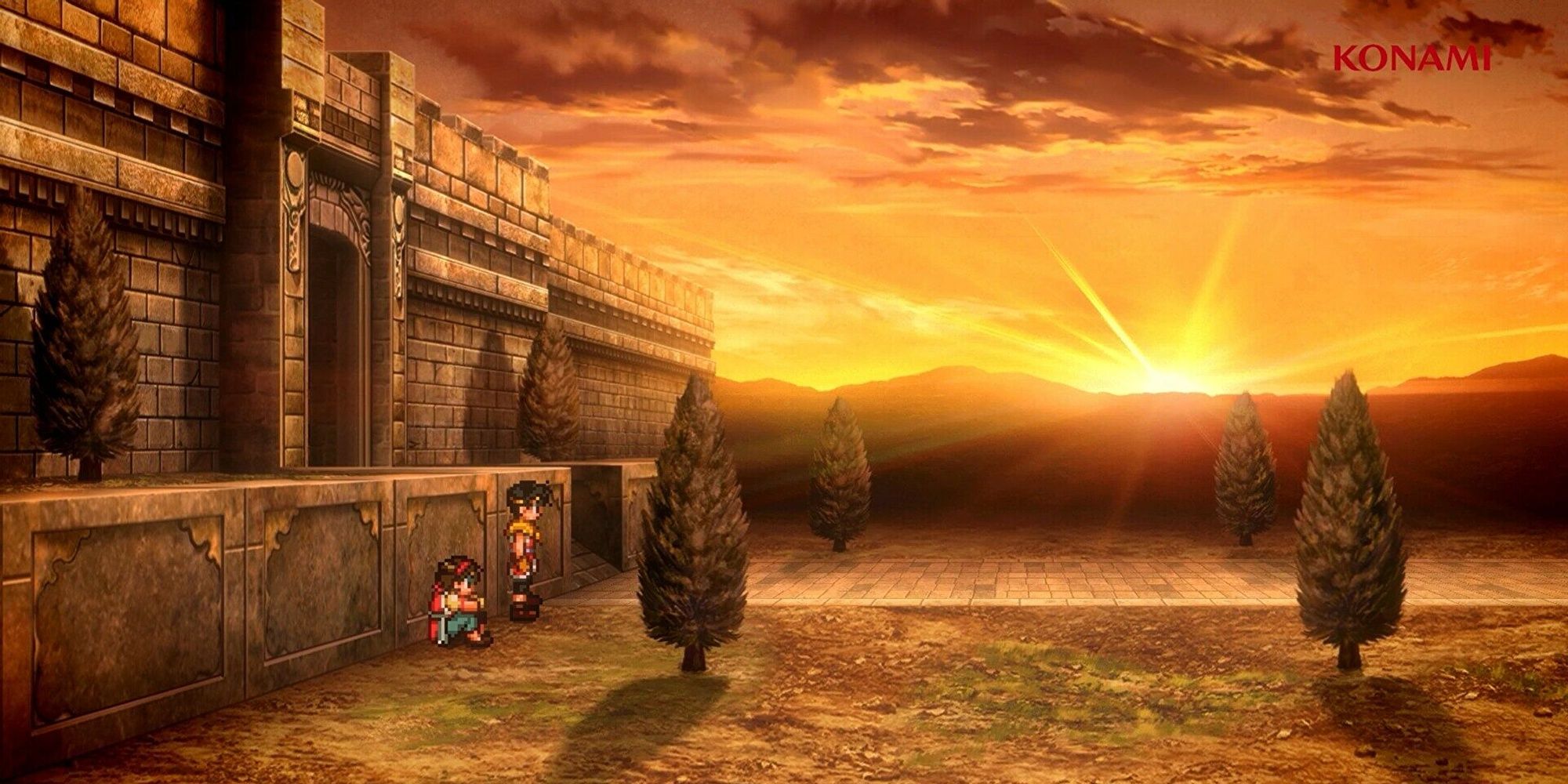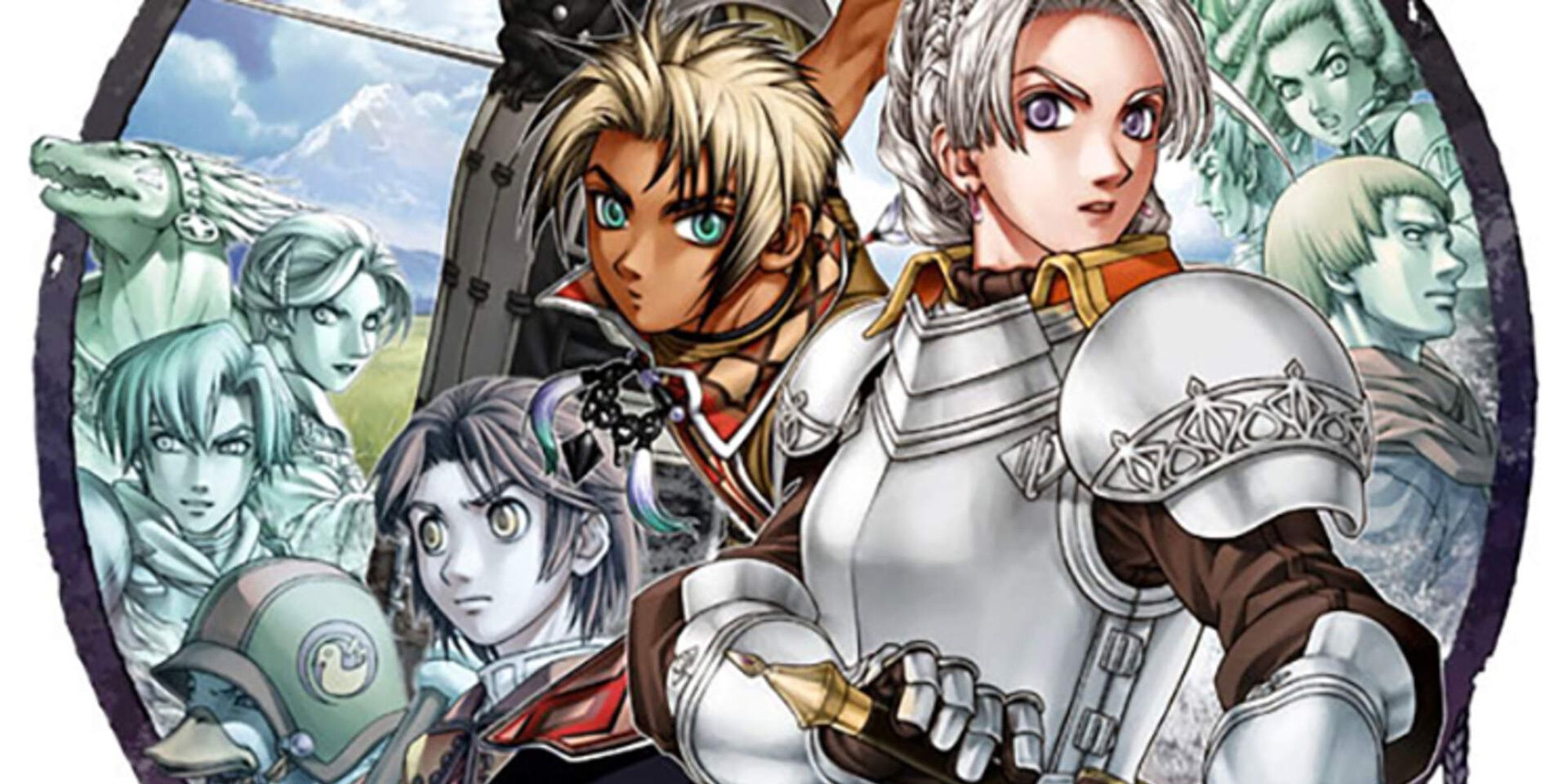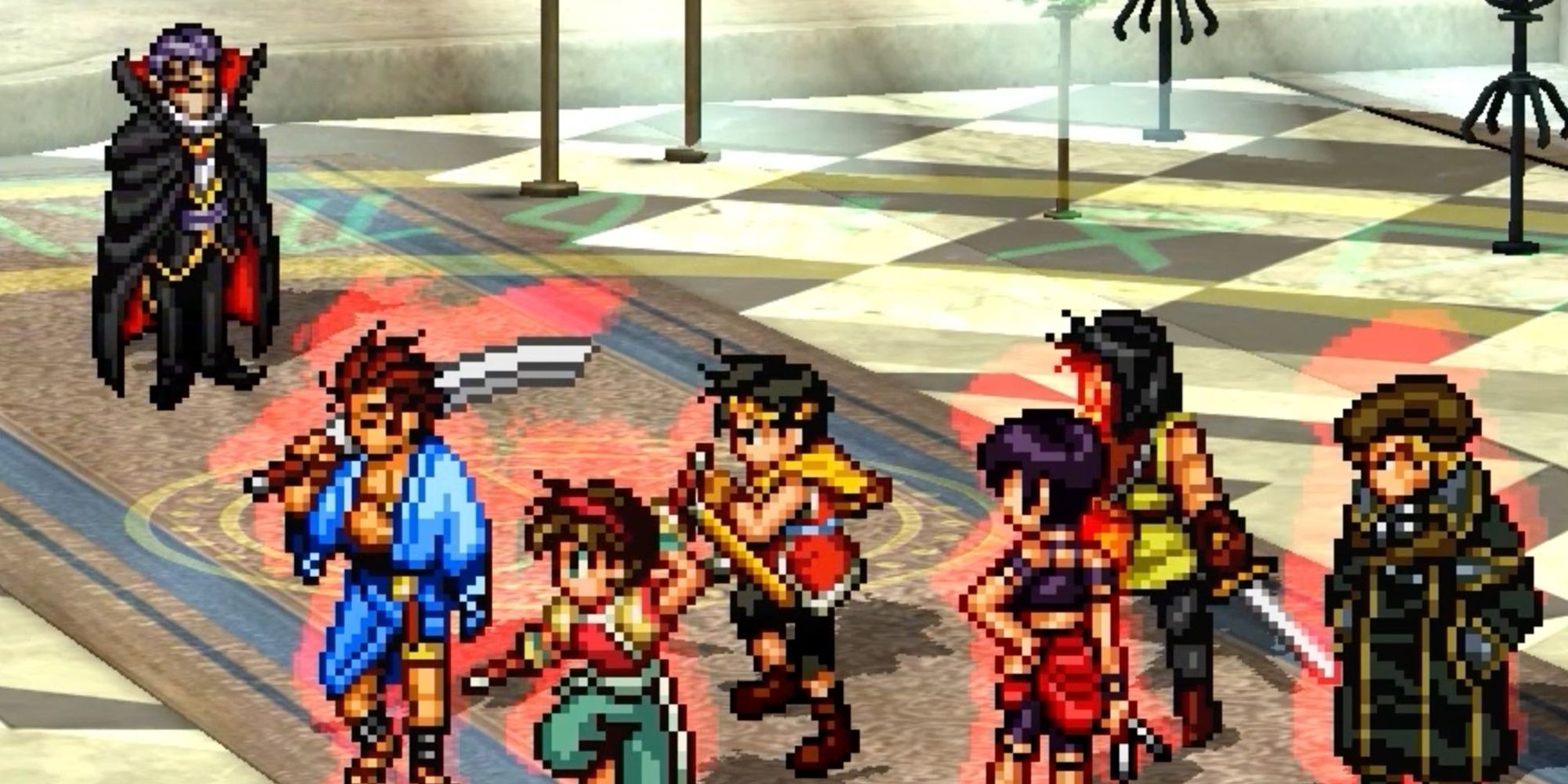The Suikoden games have a rich lore tied up in ancient Chinese literature (with a mix of Taoist principles thrown in for good measure). Spanning five main-series games and two spinoffs across its original run, from 1995 to 2006, the series has been granted a second chance at life, as the first two games in Konami’s classic JRPG series are scheduled for a remastered release in 2023.
While the world’s backstory is spread out across those games, newer fans may need a refresher to understand the power of the stars and runes that shape the future of their world.
A Prestigious Origin
To fully understand the lore behind Suikoden, we have to look to the early Chinese novel Water Margin (Shui Hu Zhuan), which was written around the 12th or 13th century AD by an unknown novelist (although many academicians point the finger towards author Shi Nai’an). Water Margin is considered one of the four great classic Chinese novels, alongside Romance of the Three Kingdoms, which has spawned multiple games courtesy of Koei; A Journey To The West, which is the basis for several modern works of fiction, including Akira Toriyama’s legendary anime series Dragon Ball; and The Plum in the Golden Vase, the only one of four that hasn’t seen a major adaptation widely circulated in the west. Put simply, Suikoden’s source material is in good company in terms of prestige.
Water Margin is the story of an outlaw who is joined by 108 companions, which fits with the 108 Stars of Destiny forming the cast of each Suikoden game. The origin of those stars, the people destined to change the world, is tied up in the game’s creation story, which goes something like this: there were once two proud brothers: Sword and Shield. Sword boasted that he could cut through anything while Shield retorted that he could deflect any attack. A rivalry erupted, and after a week-long battle between the two, both shattered, with the remains of Sword becoming the sky and what was left of Shield forming the earth.The sparks that erupted between the two became the 108 Stars, while the jewels that had once adorned the brothers remained behind as the 27 True Runes.
So, What Do The 27 True Runes Do?
The easiest answer to that is, a lot of different stuff. Some runes grant the wielder control of powerful magic, some summon monsters, and a few others just allow fantastical creatures to exist. One common theme is that, in general, the bearer of a True Rune can never really die as long as they keep it in their possession. This idea gets muddied up pretty quickly, as the first True Rune to which we’re introduced, the Soul Eater Rune, comes into the possession of the first game’s protagonist, Tir MacDohl. While Tir learns that he will never age while in possession of the rune, he also learns its use will eventually consume his body and soul. Luckily, most of the runes don’t have this caveat, but certain bearers have shown through the series that eternal life isn’t all it’s cracked up to be.
Now, there are countless common and uncommon runes in every game, but they aren’t the stuff of legends. Rather, these runes are simply born from the original 27. Any person can bear up to three runes — one each for the right hand, left hand, and head. However, with very limited exceptions, no person can handle the power of more than one True Rune at once, and if a person should attempt to gain a second, one of the runes will seek out a new host. Removing and/or sealing away a true rune can have devastating consequences for the world, though later games have shown it to be possible, while destroying a rune would likely destroy all reality along with it.
Which Runes Have We Seen?
As we mentioned, the first game centers around Tir MacDohl’s possession of the Soul Eater Rune, which governs the balance of life and death. A similar rune, the Rune of Punishment, which also saps the bearer’s life force, winds up on fourth game’s protagonist Lazlo early on.
The Rune of Beginning, which following the origin story is split into the Black Sword Rune and Bright Shield Rune, is a central focus of the second game, and its fate largely depends on the player’s choices. Similarly, the Gate Rune is also split into Front and Back halves, which have the ability to summon or banish monsters, and entire wars preceding the series’ story have been fought over the two halves of this rune. Completing the trilogy of split runes is the central rune of Suikoden V, The Sun Rune, which is split into the Dawn and Twilight runes.
The Eightfold Rune is in the possession of recurring bad guy Yuber, who appears in the first two games as a black knight and comes back in the third looking like Michael Jackson in Moonwalker before promptly disappearing altogether. His rune is never explained, but is does grant him a special attack during his limited playable sections in Suikoden III, and he does have the uncommon ability of summoning monsters despite the Gate Rune not being in his possession.
Suikoden III has a trio of protagonists from different factions in the same war, and in the fourth act, the player gets to decide which of them will become the main character and inherit the True Fire Rune. As for the other four elemental runes, the True Runes of Water, Lightning, Earth, and Wind, all make an appearance in the game and end up attached to key figures in the story, although Water and Lightning may shift places depending on how the story plays out.
The Dragon Rune simply allows dragons to exist in the world, while the Night Rune does the same for the undead. A bit of an odd rune out, the Night Rune manifests itself as a talking sword that chooses its wielder, usually much to its own chagrin, and is essential in defeating a main antagonist of the first two games. The Sovereign Rune, in the possession of Suikoden’s big bad, Barbarossa, is a weird mix of other True Runes, as it not only affixes to his sword and transforms him into a dragon but renders him impervious to all other runes.
Rounding out the entries are the Circle Rune, representing order; the Beast Rune, representing rage; the Moon Rune, which turns the bearer into a bloodthirsty vampire; and the Rune of Change, which receives brief mention in Suikoden II but never makes an appearance in the series.
While Stallion the elf bears a rune named the True Holy Rune, which grants the player turbo mode during overworld travel, this is generally considered a translation nuance, and his rune is not technically one of the 27.
But That’s Only 18
Yep. And as the series hasn’t seen a new storyline released in 16 years, 18 may be all we get. However, with the original two games currently booked for a re-release next year and the trademark recently renewed, there remains a chance that Konami will give long-time fans a break and announce a new title in the future.




